• Justin Fields: 15 carries, 178 yards, 1 touchdown, 17 for 28 passing, 123 passing yards, 3 passing touchdowns
• Tyreek Hill: 7 receptions, 143 yards, 1 touchdown
PFF's fantasy football recap focuses on player usage and stats, breaking down all the vital information you need to achieve fantasy success in 2022.
Jump to another recap:
IND@NE | GB@DET | LAC@ATL | BUF@NYJ
MIN@WSH | CAR@CIN | LVR@JAX | MIA@CHI
SEA@ARZ | LAR@TB | TEN@KC
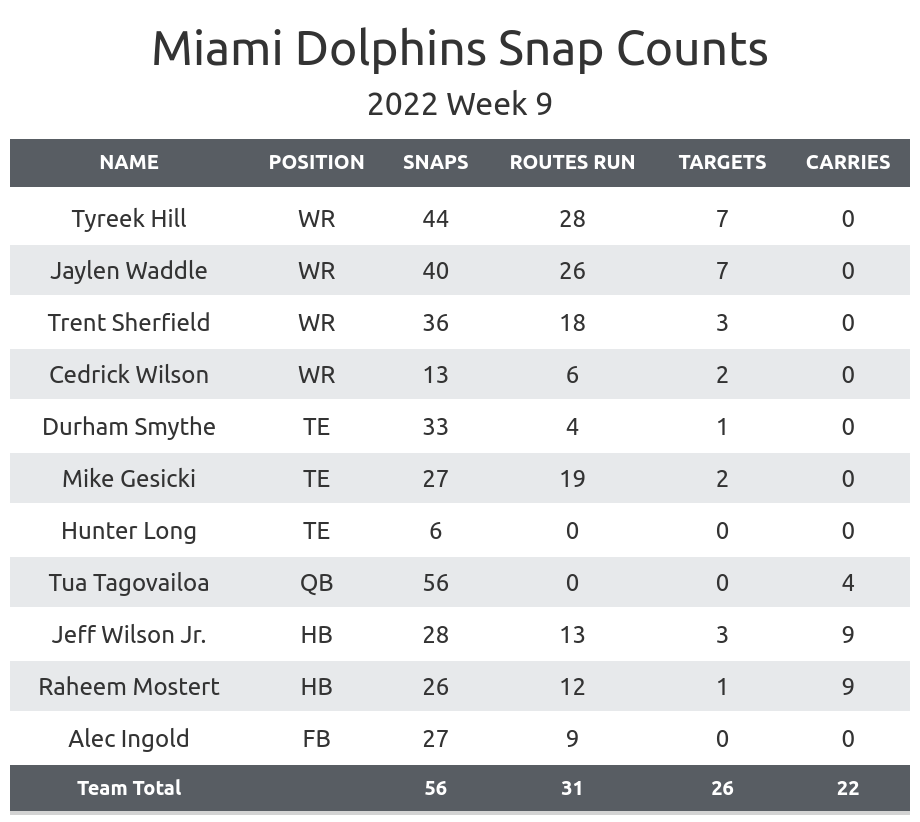
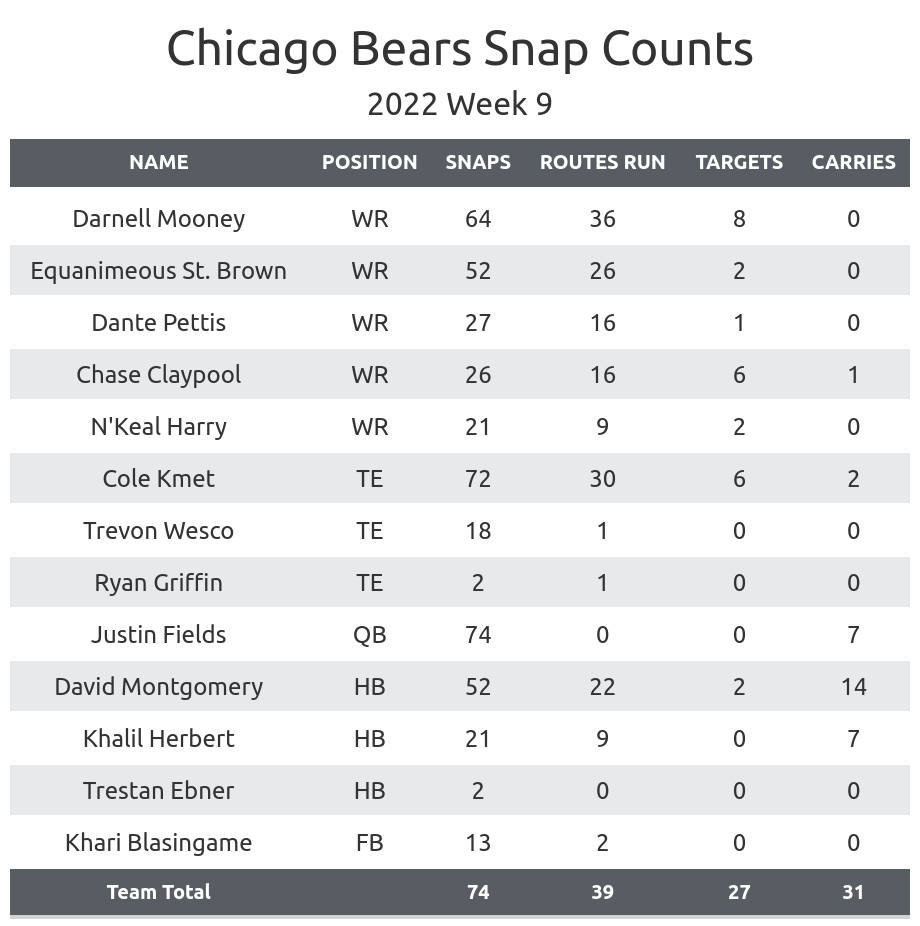
The Dolphins’ new backfield committee: Miami traded away Chase Edmonds and added Jeff Wilson Jr. at the trade deadline. Wilson may have already taken the lead in the Dolphins' backfield.
- Miami started the game with a rotation by drive, with Raheem Mostert taking the first and third drives and Wilson taking the second and fourth series. The third drive was the team’s two-minute drill.
- Mostert started the fifth drive, but Wilson took his place midway through. Wilson saw more snaps than Mostert on the fifth, sixth and seventh drives.
- Mostert took every snap on the eighth drive, when the Dolphins tried to run out the clock, but Mostert lost one yard on two carries and they passed on third down.
- Wilson took the three snaps in victory formation.
- Wilson looked better as both a rusher and receiver. The Dolphins both ran the ball nine times, with Wilson gaining 51 yards to 26 for Mostert.
- Wilson caught three passes for 21 yards, while Mostert didn’t have a catch.
- Both players scored touchdowns.
- It wouldn’t be surprising to see Wilson start next week. Both players will likely see significant playing time, regardless of who starts.
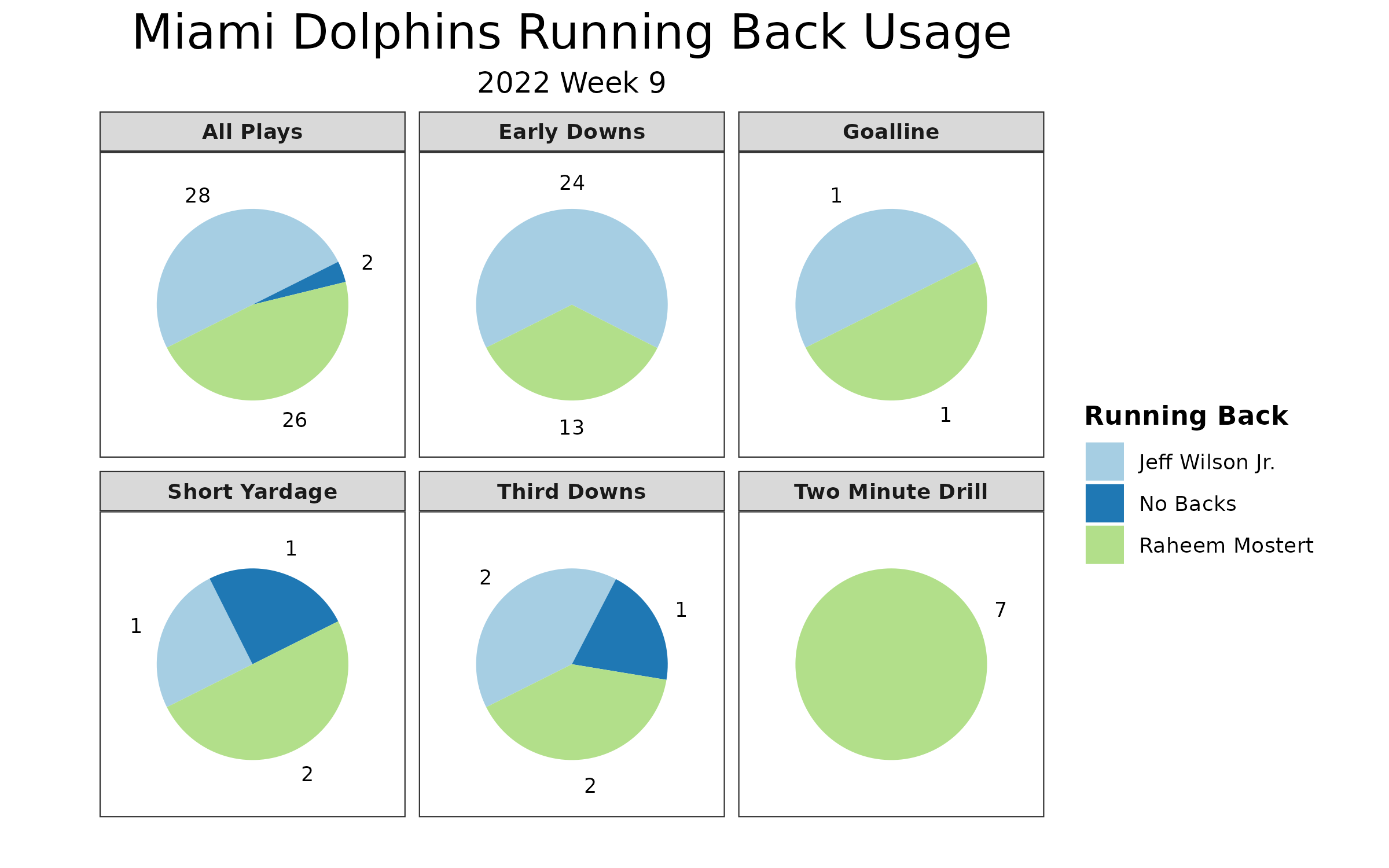
The Bears’ surprising running back usage: Chicago seemed to shift more toward a running back committee but seemed to use its running backs in the wrong situations against the Dolphins.
- Khalil Herbert received double-digit carries the past two weeks and averaged over 5.0 yards per carry in each game.
- Herbert gained 23 yards on seven carries, which wasn’t great, but it’s still a better yards per carry figure than David Montgomery gaining 36 yards on 14 carries.
- Herbert took nearly half the snaps on third downs, as well as all of the snaps in two-minute drills. This resulted in zero targets.
- Montgomery has consistently been a better receiver over the past two seasons.
- Ideally, we would see Montgomery taking a higher percentage of the passing-down snaps and Herbert at least reaching an even amount of snaps on early downs and in short-yardage situations.

Chase Claypool’s Chicago debut: The Steelers traded Claypool to the Bears for a second-round pick. He was on a snap count, but Chicago made it a point to throw him the ball.
- Chicago used a five-man rotation at wide receiver, with players constantly coming on and off the field.
- Claypool played almost entirely as an outside receiver after lining up primarily in the slot this season in Pittsburgh.
- His arrival pushed rookie Velus Jones Jr. to sixth on the depth chart and forced him to be inactive.
- Darnell Mooney has played significantly both outside and in the slot this season, but he played in the slot on over 55% of snaps for just the second time this season.
- Claypool’s 37.5% targets per route run was excellent, but ideally he would have seen more catches on his 6.7-yard average depth of target.
- He should see more snaps going forward but will likely need to develop more chemistry with Justin Fields before he can go in fantasy starting lineups.
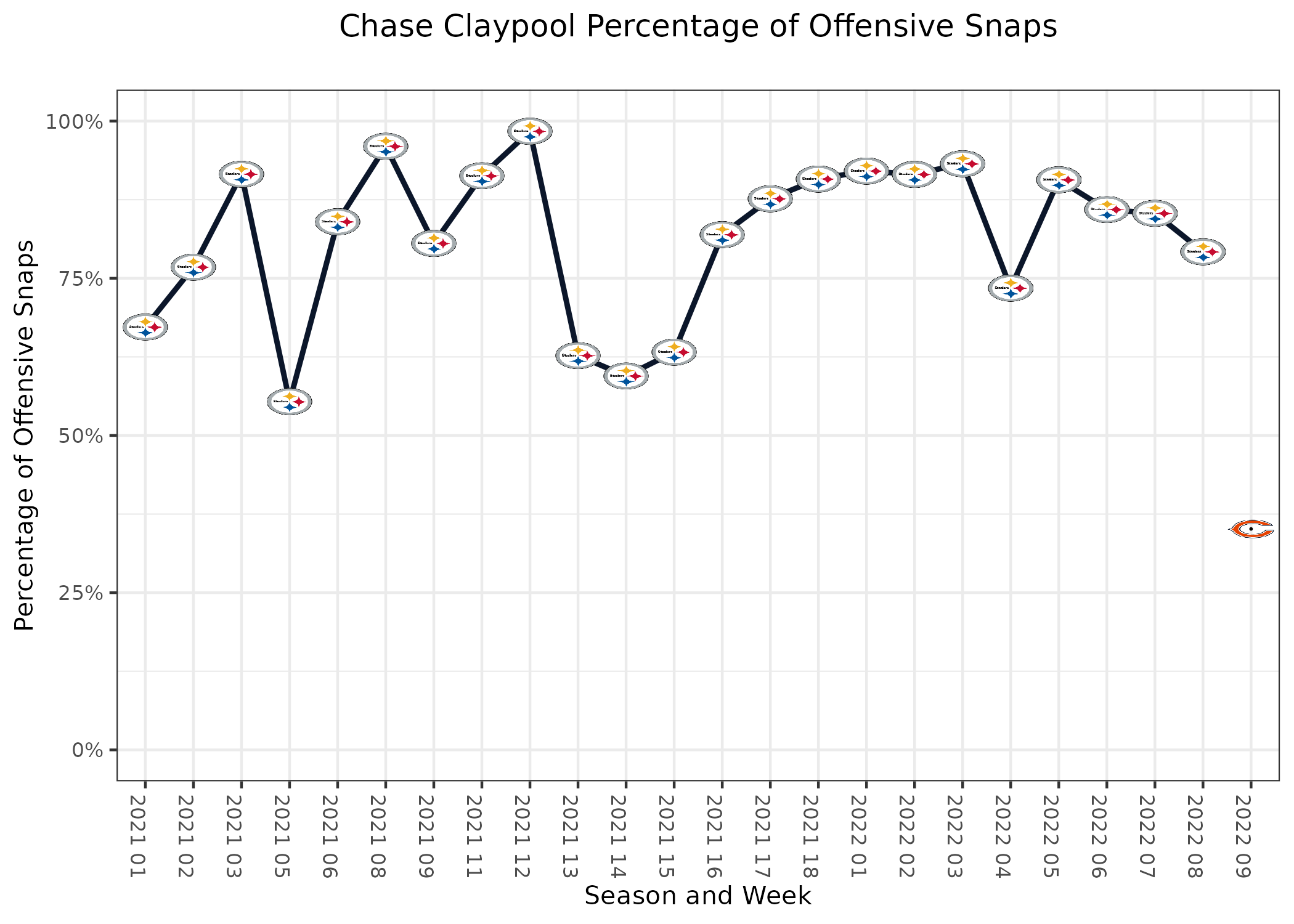
Don’t add Cole Kmet: The Bears tight end scored two touchdowns, but that doesn’t necessarily mean he will have fantasy success going forward.
- He’s yet to gain more than 45 yards in a game this season.
- This was his first game of the season as a top-12 fantasy tight end.
- His 11.9% targets per route run is the lowest rate for the 18 tight ends with 200 or more routes, and his 0.92 yards per route run is second-worst.
- His 58.8 PFF receiving grade heading into Week 9 was fifth-worst of 26 tight ends with 150 or more routes.
Table Notes
• Snaps include plays called back due to penalties, including offensive holding or defensive pass interference. The other three stats have these plays removed.
• Targets may differ from official NFL sources. The most likely discrepancy would be from a clear thrown-away pass, where the NFL may give the target to the nearest receiver, while this data will not.
• Carries are only on designed plays. Quarterback scrambles won’t count for the total number of carries in the game.
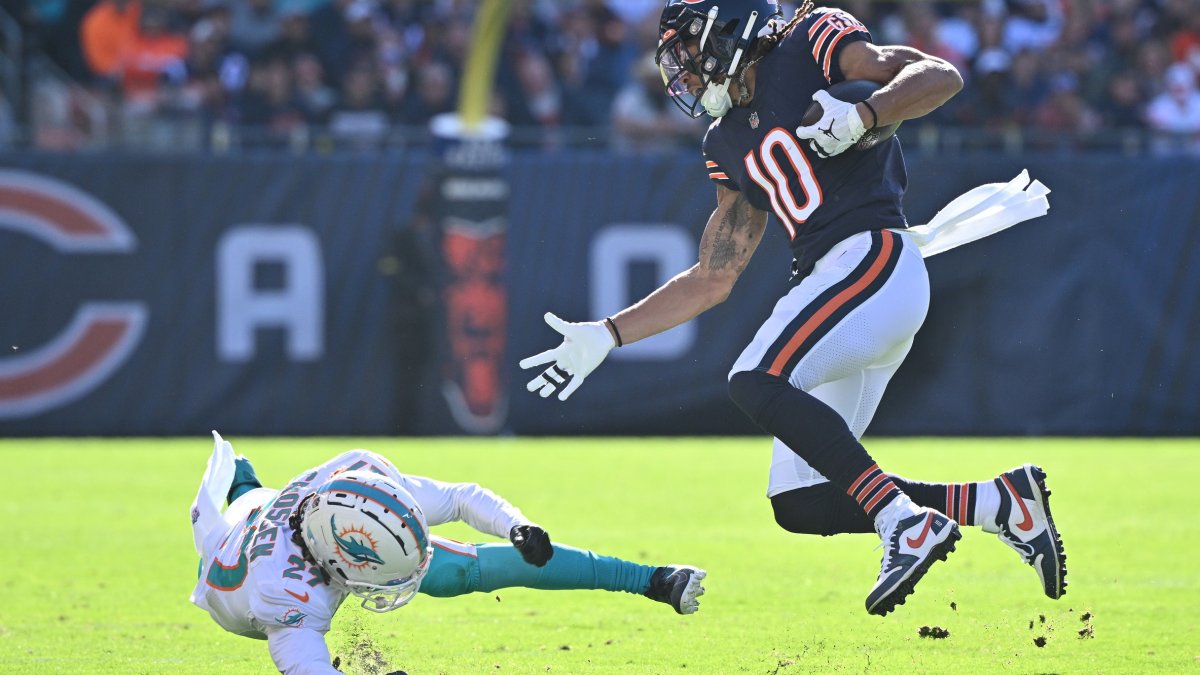



 © 2024 PFF - all rights reserved.
© 2024 PFF - all rights reserved.